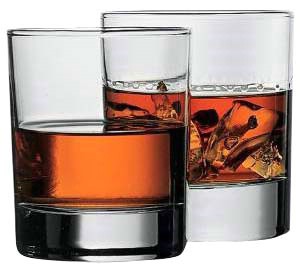
Legal clarity is overdue for Scotch whisky 'finishing'
Whisky and particularly Scotch is perhaps the most litigious subject of all spirits. Quite rightly its firm tradition and great export sales are protected by intellectual property rights. Yet a gap has emerged which is widening and worrying.
Whisky and particularly Scotch is perhaps the most litigious subject of all spirits. Quite rightly its firm tradition and great export sales are protected by intellectual property rights. Yet a gap has emerged which is widening and worrying.
Scotch whisky is specific on its production and ageing: the location - Scotland - and time for ageing - a minimum three years, a rule introduced by the Immature Spirits Act 1915.
Even the size and type of vessel used to mature it is regulated: oak casks of 700 litres capacity or less. Each such cask must not be new but have formerly contained other alcoholic beverages although they must be completely emptied of their previous contents before being used.
Distillers often extend the time to 'finish' a Scotch and this has become the disputed area. The theory is that the spirit is transferred from its original cask, typically one that previously contained US Bourbon whiskey, into one that formerly held another spirit or even a wine. Although the Scotch may be held in this second cask for a relatively short time, it adds another level of complexity and interest to the consumer.
There is no legal period set for how long the Scotch whisky has to be finished before it can be described as having a certain 'finish' but the spirit must have been in the chosen extra cask for a long enough period for its character to be affected. This is not only very subjective but is not set out in statute law and has not been tested to date in the courts. It is guidance given by the Scotch Whisky Association (SWA) to its members.
Since the type of cask used to mature Scotch and/or finish it has a significant effect on its character, it can be referred to on the label. This therefore makes for a real marketing opportunity.
The SWA lawyers think that in terms of cask chosen, there is sufficient evidence of traditional use to justify a wide range of former alcohols for either or both stages of the oak maturation/finishing: Bourbon and other whisk(e)y, rum, grape brandy like Armagnac and Cognac although technically wine spirits, fortified wine, light wine and beer/ale.
By fortified wine, the scope can be large from Madeira and Marsala to Port and Sherry. If a distiller wished to use any other type of cask, the onus would be on them to establish that it had been traditionally employed in the industry over several years and provide evidence to that effect.

|
Scotch whisky |

If the former wine or spirit cask means the Scotch loses its traditional aroma, taste and appearance, it will no longer qualify as Scotch. As an extreme example, this would occur if the Scotch was matured in a wine cask until it becomes pink or red!
Leaving aside this unlikely scenario, the choice of previous fill for the oak and length of time for the finish is vast and tempting to those who wish to add value. The SWA gives guidance which reflects its interpretation of the law which needs to be followed by its 61 members but a different view may be taken by others. Currently there are 118 Scotch whisky distilleries licensed to produce in addition to companies which blend and bottle.
With the high value that follows a special finish, it is most unlikely that any consumer is going to complain to Trading Standards. The buyer is not only delighted to secure a special filling but usually pleased that the bottles continue to rise both at auction and for replacement.
Aware of a gap in a usually strict law and the demand for more and more exciting ways to finish a Scotch, the final barrels have moved on from district or regional terms like Sauternes and Port to specific estates - one Islay distillery using former premier grand cru chateau d'Yquem - and Douro quintas. Rum has similarly been used, naming particular distilleries and islands.
Apart from a declared age for a malt Scotch, such innovation might be extended to indicating barrels from a particular year. This in time could attract a cult following, perhaps in key export markets that follow both Scotch and fine wine, such as Asia.
Such lingering dangers now need to be addressed. Legal clarity is overdue. Labels that state a spirit has been personally stirred by HM The Queen pop up from time to time and produce a wry smile but such bottles are localised and the spirit is not UK made.
For this important loophole to be brought to a proper conclusion, there are two avenues which ought to be urgently pursued: either a court case or Parliamentary legislation. A Private Member's Bill could achieve the result at far less cost than the former. To ignore a ticking time bomb could be to lose much of the credibility and probity that the makers and distributors of Scotch whisky have spent generations securing.




